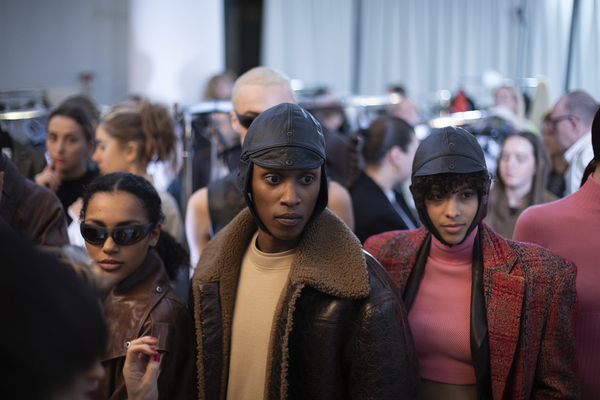(NewsNation) — This year’s biggest trend shows up under many names: eco-fashion, capsule or minimalist wardrobes, upcycled or organic, or biodegradable or compostable fabric.
Fashion brands are marketing their commitment to making the notoriously wasteful industry sustainable — from small-batch designers like Rentrayage to global names like Vivienne Westwood to retail giants like Patagonia.
“By definition, fashion is unsustainable. We’re always chasing after the next trend,” said Mark Brewer, president of Euro University of Bahrain. He also researches corporate social responsibility within the fashion industry.
Fashion’s giant carbon footprint adds up all along the supply chain — from growing material in one part of the world, weaving it in another, sewing it somewhere else and selling in many different markets.
“There’s no way of getting around the fact that the more that we buy, the greater impact that has on the planet,” he said.
Solutions won’t come easy but start by looking at the clothing as having a “lifecycle,” Brewer said, and trying to address waste at every stage. Some ideas are showing promise before, during and after a garment is made.
Mushroom leather and bio fabrics
One of the hottest fashion trends of the past few seasons has been luxury leather made from mushrooms.
Fashion fungi has been hitting the catwalk, from Balenciaga’s black trench to Adidas tennis. The fabric called Mylo is made by combining the root part of mushrooms with agricultural waste, essentially fabric that grows into the shape of a mold.
Other innovations in the field include “yarn” grown from algae and dyed with crushed insect shells — a process creators say can produce the exact amount of material needed from significantly less water and with zero toxic chemicals.
Part of the reason these ideas are so exciting is they eliminate the ever-increasing problem of trash. Unlike synthetic fibers — which can take decades or even centuries to break down — they’ll quickly decompose if they end up in landfills.

Keeping track
The current buzzword of the fashion industry is traceability, or the ability to see “where a finished product comes from and what it went through before the consumer purchased it,” Brewer said.
Following that trail has become an integral part of many brands’ stories.
Take for example knitwear brand ZANKOV, which, according to their website, only works with small, family-owned mills, uses organic or recycled yarns, and has created a new prototyping system that significantly reduces waste.
Other brands have promised they’ve eliminated labor abuses from overseas factories, grown their own cotton from scratch or increased the durability of fabrics so clothes last longer.
The French government recently went as far as requiring all large clothing brands to use labels that detail the makeup and recyclability of products, such as the presence of microplastics.
“It’s the first example that I know of where a government has tried to create a law to really put into place what has been voluntary up until now,” Brewer said.

A new kind of consumer
Changing an industry that stretches across so many countries and cultures means change will likely come down to the choices of consumers and private companies, Brewer said.
“Traceability is just one small element,” Brewer said. “We don’t have a really clear view of what sustainability is in the fashion industry … That leaves companies able to create (definitions) for themselves.”
Many brands at the forefront of climate consideration take a more holistic view of who their “stakeholder” is, he said, including “those that work at your company, those that purchase your products, the generation that will come afterwards that will have an opinion of your company.”
Growing in popularity is leftover, recycled or plant-based fabrics that promise an easier and less toxic decomposition. At Copenhagen Fashion Week, just weeks before its more-famous sibling in New York, brands were required to use at least 50% of these textiles.
“We need to ultimately, at some point, say ‘no’ to someone because they don’t live up to our standards,” Nicolaj Reffstrup, a member of the event’s sustainability advisory board, told The New York Times. “That’s when you prove that you’re serious about it.”
And when these efforts are made at high-profile events, Brewer says it communicates that “when we purchase something, we (should) think very carefully about purchasing items that are durable, that we will have a long term commitment to wearing.”






